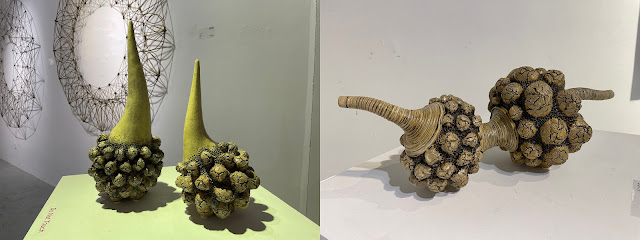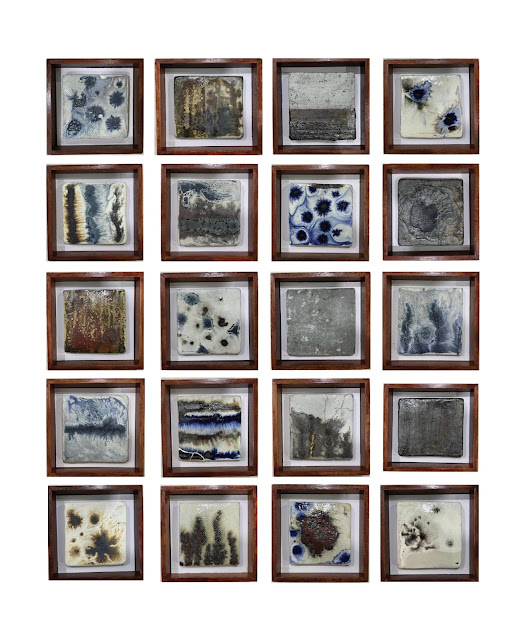Academic-Artist is a fundamental praxis towards the development of Malaysian Art. The Cambridge dictionary defines academician as 'a member of an academy', and artist as 'someone who creates things with great skill and imagination'. In terms of art and design education, the Institut Teknologi MARA (ITM), now Universiti Teknologi MARA (UiTM) was the first to offer modern art and design education, and the first to deal with the problem of the roots of indigenous art and traditional culture (Khalil Amran, 2016).
Picasso addresses the significance between education and artist as "Learn the rules like a pro, so you can break like an artist". In a historical context, the synergy between both education and artist is identical towards the Zeitgeist development of Malaysian Art. 'Zeitgeist' is an expression of the human desire for freedom, which sets standards for what is beautiful (Hegel, 1998). Hence, the freedom of humankind to express in series of dialectical oppositions, resolving as the Synthesis (originality, identity, novelty), is apparently unfold in this 50 / 50 entitled Academic-Artist exhibition.
In the historical development of Malaysian Art, such synergy to explore beyond the traditional art conventions of the past were embedded within the early Pre-Independence Art groups (Mahamood, 2007). As early as the 1930s, the stylistic treatment of naturalistic form and content in artworks such as the Penang Watercolorist, Nanyang Academy, as well as Wednesday Art Group eventually liberated the shackles of traditional art conventions. The direction they took were one way or another, significant towards early Western Modern Art movements such as the Impressionism and Post-Impressionism.
These artists of the Pre-Independence had compelling dexterity to explore and establish new approaches in art, one which was far dominated by the British in Malaya. In the early 1930s, there was a group of European artist mainly made of English wives known as the Penang Impressionist (Piyadasa, 1983). During the colonial era local artist were not allowed to join the group, meanwhile visits on artworks of the exhibtion were permitted as inspiration for the public. However, Abdullah Arif an Academic-Artist who was one of the forefathers of Penang Watercolorist, were allowed to join the Penang Impressionist, in need of his service as a talented art teacher, as well as artist.
Early local artist outside of the British art group circle, interested in the new art approach would visit organised exhibitions to gather inspiration on the forms and contents, aside from attending art gatherings and activities of their own. The Academic-Artist from Nanyang Academy of Fine Arts, sets the earliest cornerstone of Malaysia's Pre-Independence art education development. Eventually, by the formation of Wednesday Art Group by art educator and painter Peter Harris, the western education approach in art were democratised to instruct local artist and art teachers.
Wednesday Art Group promoted the principle of "Art as a medium of Self-Expression". The western mode of expression gained its popularity and this probably was because of the British Educational system being introduced in Malaya that time (Pre-Independence), which was in favour of a purely western approach to education (Md. Zain, 1982).
10 years after independence in 1957, ITM played a fundamental role in spearheading the Academic-Artist praxis development in the country's art education. Syed Ahmad Jamal (1982) remarked that in the early 1970s the lecturers of Institut Teknologi MARA (ITM), have taken a leading role in an effort to create the avant-garde art scene in Malaysia.
Mohd Jamil Mat Isa (2016) in 'The beginnings of the Art & Design School: A Brief Narrative', describes "Tan Sri Ayob, the sixth director of Dewan Latihan RIDA (DLR) in 1965 initiated the Art and Design Course to be offered and then Dewan Latihan RIDA was transformed into Institut Teknologi MARA (ITM) on 14th October 1967". To mention a few, among the Academic-Artist were Hijjas Kasturi, Choong Kam Kow, Redza Piyadasa, Jolly Koh, James McKendry, Ismail Ibrahim, Ahmad Khalid Yusof, Joseph Tan Chian Jin, Sulaiman Esa and many others.
What mirrors the development of Malaysian and Western Modern Art, are chronologically based upon its art narrative transitions, which directly or indirectly contributes towards the style development of an individual artist or a collective art group and movement. Mohamad Khalil Amran (2016), states "Freedom of expression is the fruit of modernist phenomenon of the twentieth century. Harvested after a historical period of Grand Narratives of Classical Art, artist were subjected to many limitations of Classical cannons of mimesis and religious iconography. Apparently, more liberating forces are at work; diversity of form, content, and context in art are the few by-products of Modern Art, especially Malaysian Modern Art.". These narratives serves as an expression towards aesthetic values which shapes the cultural unity and identity of the country.
In a nutshell, Academic-Artist is the praxis of cultural unity and identity of the country. From the historical context, ITM/UiTM has been the manoeuvring vessel, responsible in producing the nation's pioneering celebrated art and design alumni's ever since 55 years of its establishment. In conjunction, these progressive efforts of the past and present has brought to light this 50 / 50 entitled Academic-Artist exhibition.
This "50 / 50" exhibition will continue to be available for public viewing at Segaris Art Center, Publika Mall, Solaris Dutamas, from 29th September until 21st October 2022.























Comments
Post a Comment